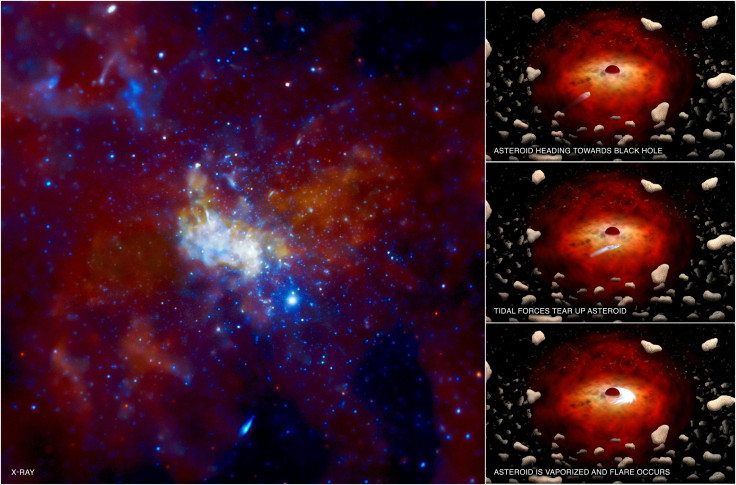Why Are Giant Black Holes Inept At Gulping Their Prey? Scientists Find The Answer

Astronomers using NASA's Chandra X-ray Observatory say they may have figured out why giant black holes are clumsy at sucking in all the cosmic material around them, taking one more step toward better understanding why black holes behave the way they do.
A black hole is formed when the center of a large star collapses causing a supernova -- an explosion that blasts parts of the star into space. The process creates a powerful gravitational pull, which is so great that it consumes everything that falls within its reach, including light. However, astronomers now believe, based on the latest observations by Chandra, that there may be exceptions to this rule.
“We found that when matter flows toward a black hole, more than 99% of it is ejected" away from it, the Wall Street Journal reported, quoting Q. Daniel Wang of the University of Massachusetts in Amherst, who led a study published in the journal Science, on Thursday.
The Chandra X-ray Observatory took images of “Sagittarius A*”, or Sgr A*, a "supermassive" black hole located about 26,000 light years from Earth. And, the images indicated that less than one percent of the gas initially within Sgr A*'s gravitational grasp ever reaches the point of no return, also called the event horizon. Instead, much of the gas is ejected before it gets near the event horizon and has a chance to brighten up, leading to weak X-ray emissions.
“Contrary to what some people think, black holes do not actually devour everything that’s pulled towards them. Sgr A* is apparently finding much of its food hard to swallow,” Feng Yuan of the Shanghai Astronomical Observatory in China, and co-author of the study, said in a statement.
The gas available to Sgr A* is very diffuse and super-hot, so it is hard for the black hole to capture and swallow it, according to NASA.
Astronomers said also that the new findings from the Chandra data contradict theoretical models in which the X-rays are emitted from a concentration of smaller stars around the black hole. Instead, the X-ray data of Sgr A* show that the gas near the black hole likely originates from winds produced by a disk-shaped distribution of young massive stars.
© Copyright IBTimes 2024. All rights reserved.












